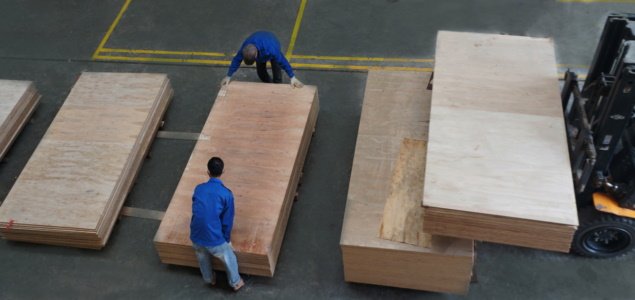According to the latest findings from the research office of the Italian Woodworking Machinery and Tools Manufacturers’ Association (Acimall), the woodworking machinery sector experienced a notable 3.5 percent growth in production in 2023 compared to the previous year. Despite a less robust trend in orders compared to previous years, companies in the sector maintained a strong order book, leading to increased turnover by the end of the year. This positive trend, coupled with the 5.3 percent growth in 2022, reflects the resilience of the sector, allowing companies to invest and solidify their positions both domestically and in global markets. The production value has reached a historic high of 2,740 million euros, with exports constituting approximately 70 percent of the total, growing by 7 percent to 1,935 million euros. In contrast, domestic market sales contracted by 4 percent to 805 million euros, with imports showing a robust decrease of less than 7 percent at 270 million euros compared to the previous twelve months.
Natural Downturn in the Italian Market
The Italian woodworking machinery sector is experiencing a relatively less favorable period in its domestic market, which is a foreseeable outcome given the substantial investments made by users in recent years, leading to a saturation of the existing technological infrastructure. This decline is considered natural and expected, reflecting the market’s current state accurately.
Apparent consumption has decreased by 4.3 percentage points, amounting to 1,075 million euros. However, this decline does not diminish the strong demand for wood and furniture technologies in Italy, maintaining its position as the fourth-largest market globally, following China, the United States, and Germany, and surpassing Vietnam, which holds the fifth position.
Remarkably, the global trade balance for wood technologies and derivatives remains robust in 2023, boasting a surplus of 1,665 million euros, indicating a 9.3 percent increase from 2022. This positive performance adds a significant contribution to the national data, marking a noteworthy achievement in the broader landscape of machine tool production.

2024
As previously highlighted, the Italian woodworking machinery industry has been gradually returning to more typical levels over the past few quarters, moving away from the extraordinary surge experienced in recent years. This trend suggests that 2024 may continue along this trajectory. Dario Corbetta, the director of Acimall, acknowledged the challenge of estimating precise values due to ongoing international uncertainties with potential ramifications for the global economy. He emphasized that while the woodworking sector experiences the usual oscillation between positive and less favorable periods, the notable growth in recent years has created a significant peak, necessitating a gradual return to normalcy. This implies a sustained presence of negative values, albeit in moderate percentages, for an extended period.

Nevertheless, the sentiment persists that the sector is, perhaps excessively, concerned about what is, in all respects, a physiological contraction, as stated by Corbetta. The data for 2023 illustrates this, and companies today are unquestionably more resilient, both financially and organizationally, compared to other, much more challenging seasons in the past. This will enable them to handle a contraction that can be easily characterized as “normal,” albeit accentuated by the extraordinary results of the previous three years.
Industry 5.0
Undoubtedly, in recent years, the Italian market has experienced a boost from various types of investment support measures. Looking ahead, there are factors that could significantly influence outcomes for the next season. Specifically, we refer to the provisions outlined in the “Industry 5.0” plan, integrated into the Pnrr-National Recovery and Resilience Plan, which has received approval from the European Commission for its alignment with the “REPower EU” initiative. This initiative aims to expedite the community countries’ transition to clean energy use and, more broadly, the implementation of measures facilitating a reduction in consumption.

In this scenario, the recent incentives introduced by the national economic authorities play a crucial role in supporting investments that align with the connectivity and integration standards outlined in the company management networks envisioned by “Industry 4.0.” These incentives are designed to ensure outcomes that are not only energy-efficient but also comply with established norms.
“For the two-year period 2024-2025, funds amounting to 6.3 billion euros will be made available to companies through the tax credit instrument, in addition to the benefits provided by the “Industry 4.0” plan, created to support all interventions aimed at improving the energy efficiency of machines and systems,” notes Dario Corbetta. “The recent contraction may have been influenced by the decision of many companies to await the full operationalization of the new measure before committing to new investments. These measures are undeniably considered ‘welcome,’ despite the evident ‘elastic’ effects they inevitably exert on demand. Broader policies, not subject to yearly fluctuations, would undoubtedly yield more lasting and structural effects on demand trends.”
Hence, there are grounds for cautious optimism, with the certainty that enabling potential customers and users to grasp the innovation in terms of consumption management will undoubtedly impact the entire offer.
Source: Fordaq.com




